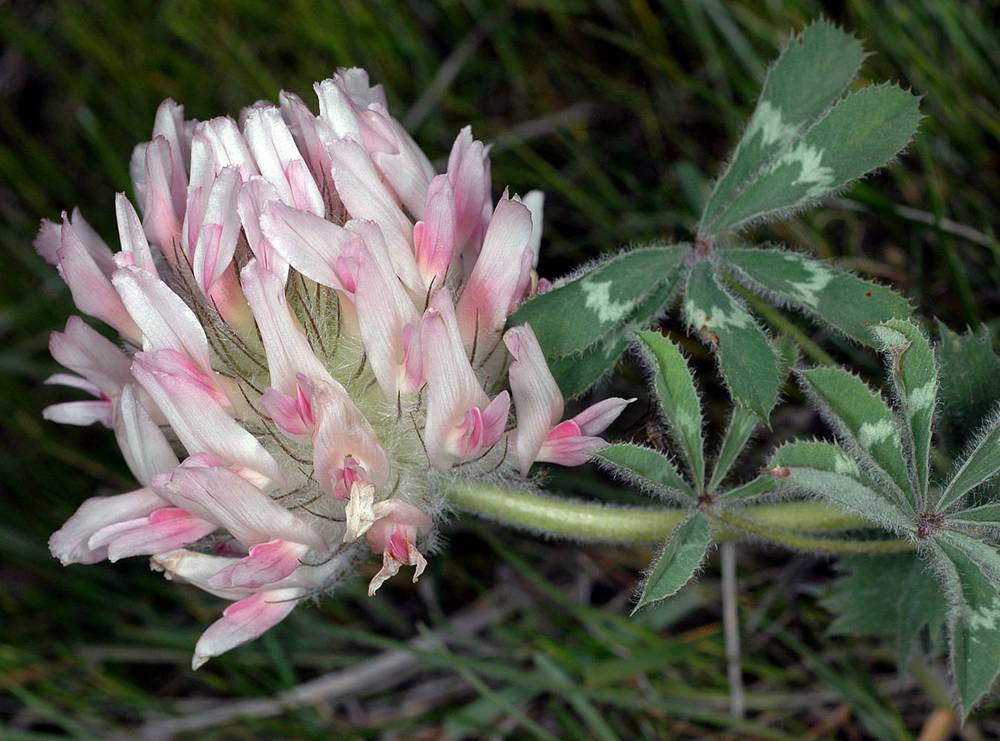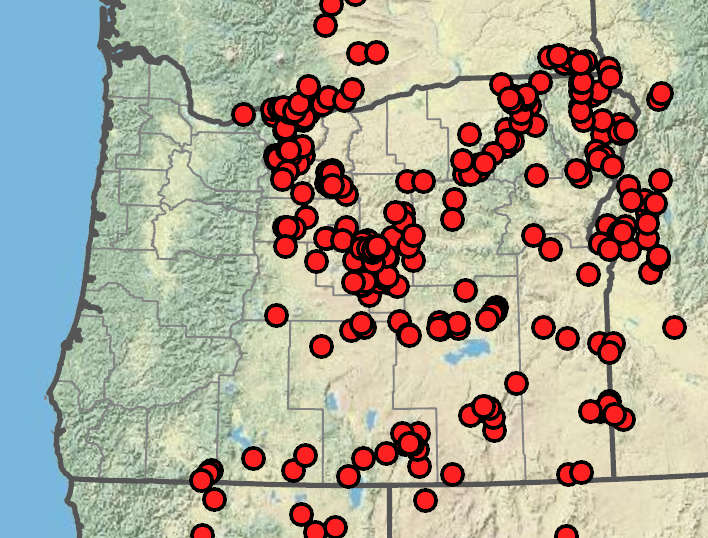Trifolium macrocephalum
Trifolium striatum
big-headed clover, largehead clover
knotted clover
palmate;
leaflets (5)7–9, broadly to narrowly obovate, often folded, 10–27 × 4–11 mm, bases cuneate;
margins serrulate or irregularly lobed;
veins thickened, especially distally;
tips rounded or truncate, apiculate;
surfaces abaxially villous, adaxially sparsely villous to glabrate;
petioles 10–140 mm;
petiolules 0.9–1.2 mm;
stipules ovate, obovate, or oblong, 10–30 mm;
margins entire.
pinnate;
leaflets 3, obovate to oblong, 9–16 × 4–10 mm, bases cuneate;
margins denticulate;
veins fine;
tips obtuse, obcordate, or emarginate;
surfaces hairy;
petioles 5–50 mm;
petiolules ~0.5 mm;
stipules lanceolate-ovate, 9–11 mm;
margins entire;
tips acute-acuminate, setaceous, ciliate.
terminal, 20–32-flowered, globose or ovoid-ellipsoidal, 25–80 × 30–70 mm;
involucres absent;
bracteoles broadly ovate, membranous; ? 0.5 mm, truncate.
axillary or terminal; solitary or paired, 20–60-flowered; ovoid or oblong, 6–10 × 8–16 mm;
involucres absent but subtended by stipular pseudo-involucre;
bracteoles absent.
20–80 mm.
0–10 mm.
erect, 1–1.5 mm.
absent.
20–30 mm;
calyces campanulate, 10–22 mm, villous;
veins 10–15;
tubes 2.5–4 mm;
lobes subulate, subequal, 2–4 × tube length, plumose;
orifices open;
corollas 20–28 mm, white; creamy white, or pinkish;
banners ovate or oblong, 20–28 × 10–13 mm;
tips rounded or slightly emarginate;
keel petals deep pink.
5–7 mm;
calyces ellipsoidal to urceolate, 3–4 mm; hairy;
veins 10;
tubes 2–3 mm;
lobes erect or spreading, unequal; abaxial lobes subulate; longest equal to tube;
orifices open;
corollas 25–35 mm, pink;
banners oblong, 2.5–3.5 × 1.5–2 mm;
tips retuse.
longitudinally dehiscent; ovoid, 4–5 mm; ? calyces.
transversely dehiscent; ovoid, 2–2.5 mm; ? calyces; leathery distally.
1–2; mitten-shaped to ellipsoid, 2.5–3 mm, yellow or reddish; smooth.
1, globose to ovoid, 1–1.5 mm, tan or reddish brown; smooth; glossy.
=32, 48.
=14.
Trifolium macrocephalum
Trifolium striatum
Rocky places, hard, compacted clay gumbo, lava beds, sage-covered slopes. Flowering Apr–Jul. 0–2200 m. BR, BW, Col, ECas, Lava, Owy. CA, ID, NV, WA. Native.
Trifolium macrocephalum has the largest inflorescences of any species in the genus. The name T. megacephalum is an illegitimate replacement name for Lupinaster macrocephalum.
Disturbed areas. Flowering May–Jul. 0–700 m. CR, Est, Sisk, WV. CA; scattered in eastern US, AR, OK, MO; Asia, Europe. Exotic.
This species is native to Eurasia and has been recorded as an occasional weed in the United States, having been first collected on ballast in New Jersey in 1880. It is found sporadically as a weed of disturbed habitats and appears to be spreading rapidly.
Michael Vincent
Michael Vincent
- Local floras:
BC,
CA,
OR,
WA
- Local Web sites:
CalFlora,
CalPhotos,
Flora NW,
PNW Herbaria
WildflowerSearch
iNaturalist (observations)
USDA Plants Database
- LBJ Wildflower Center
- SEINet
- Plants of the World Online
- Encyclopedia of Life
- Wikipedia
- Google Image Search





